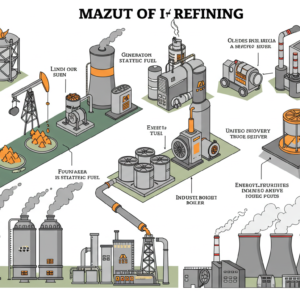In the world of global trade, ensuring that both the seller and the buyer are protected during a transaction is crucial. One of the most reliable ways to achieve this is through the use of a Letter of Credit (LC). But what exactly is an LC, how does it work, and why is it essential for international business? Let’s dive into this powerful financial tool and explore its role in global trade. 💼🌎
What is an LC (Letter of Credit)? 📜💳
An LC (Letter of Credit) is a financial document issued by a bank on behalf of the buyer, guaranteeing payment to the seller upon fulfillment of certain conditions. The LC serves as a promise from the buyer’s bank to pay the seller for goods or services once the terms outlined in the credit are met.
This tool acts as a safety net, reducing the risks involved in international transactions by ensuring that the seller will receive payment, and the buyer will receive their goods. Think of it as a middleman between the buyer and seller, providing trust and security to both parties. 🤝
How Does LC Work? 🔄

- Agreement between Buyer and Seller: The buyer and seller agree on the terms of the transaction, including the price, delivery schedule, and the use of an LC.
- Buyer Requests LC from Bank: The buyer applies to their bank (issuing bank) to issue an LC in favor of the seller. The buyer provides the bank with the details of the transaction.
- Seller Ships Goods: The seller ships the goods according to the agreed-upon terms and provides the bank with the necessary documents (such as shipping receipts, invoices, etc.).
- Documents are Verified by Bank: The buyer’s bank (the advising bank) verifies that all documents match the LC requirements.
- Payment to Seller: Once everything is in order, the buyer’s bank releases the payment to the seller, and the transaction is completed.
- Bank Issues LC: The bank then issues the LC, which outlines the specific terms and conditions that the seller must fulfill to receive payment.
Types of LC ✍️
- Revocable LC: This type of LC can be amended or canceled by the buyer at any time without the seller’s consent. It’s rarely used in international trade due to the risks it presents to the seller.
- Irrevocable LC: This is the most common type of LC, as it cannot be changed or canceled without the agreement of all parties involved. It provides more security for both the seller and the buyer.
- Confirmed LC: In this case, a second bank (usually the seller’s bank) adds its confirmation to the LC. This means that the seller’s bank guarantees payment even if the buyer’s bank fails to honor the LC.
- Unconfirmed LC: An unconfirmed LC means the seller’s bank is not involved in guaranteeing payment. It’s solely the responsibility of the buyer’s bank.
- Sight LC: Under a sight LC, payment is made immediately upon presentation of the required documents to the bank.
- Usance LC (Time LC): This type of LC involves deferred payment. The seller receives payment after a certain period, typically 30, 60, or 90 days after the documents are presented.
Why Use an LC in International Trade? 🌍💡

- Security for Both Parties 🔐
- For the Seller: The LC guarantees payment once the terms are met, reducing the risk of non-payment.
- For the Buyer: The LC ensures that goods will only be shipped once the agreed-upon conditions are met, protecting the buyer from substandard or incomplete deliveries.
- Mitigates Risk 🚨
- Political and Economic Risks: In some countries, political instability or economic issues can pose a risk to payments. An LC minimizes this risk by involving banks as intermediaries.
- Trust Issues: In international trade, the buyer and seller often have no prior relationship. The LC provides an assurance of trustworthiness.
- Facilitates Financing 💰
- With an LC, sellers can often use the documents to secure financing from their own banks, allowing them to keep their cash flow healthy while waiting for payment.
- Increases Global Trade 🌎💹
- The use of LC opens up international markets to businesses that might otherwise be hesitant to trade across borders due to the risks involved. It fosters confidence and promotes economic growth.
Common Documents Used in LC Transactions 📄
- Commercial Invoice: This document provides a detailed description of the goods and the terms of the sale.
- Bill of Lading: It’s proof that the seller has shipped the goods as per the agreed terms.
- Packing List: This document lists the contents of each package.
- Insurance Certificate: In some cases, the LC may require the seller to provide proof that the goods are insured during transit.
- Certificate of Origin: This verifies the country where the goods were manufactured.
Risks of Using an LC ⚠️
- Complexity and Cost: The process of issuing and managing an LC can be time-consuming and costly, involving multiple parties (banks, intermediaries).
- Documentary Discrepancies: A minor mistake in the documents can result in delays or rejection of payment.
- Limited Flexibility: Once an LC is issued, it is difficult to make changes, which can be problematic if there is a misunderstanding between the buyer and seller.
Conclusion: Why LC is a Game-Changer in International Trade 🔑🌍
In the fast-paced world of international trade, a Letter of Credit (LC) provides unmatched security, trust, and ease of transaction for both buyers and sellers. By acting as a financial safeguard, an LC ensures that both parties fulfill their contractual obligations, making it easier to engage in global commerce with confidence. 🌍💼 Whether you’re a seller or a buyer, understanding and utilizing LC can unlock the door to smoother, safer, and more successful international trade deals. 💪🌐











